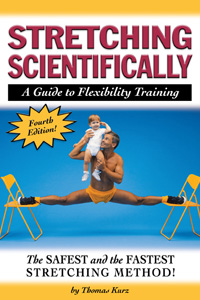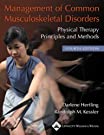by Thomas Kurz
Information on this Web page is for educational use only, and is not intended as medical advice.
Every attempt has been made for accuracy, but none is guaranteed. If you have any serious health concerns, you should always check with your health care practitioner before treating yourself or others.
Always consult a physician before beginning or changing any fitness program.
Many people write to me with questions that can be summed up thus: I have a boo-boo . . . I have overdone my exercises . . . I have torn this or broken that . . . what should I do now? Being polite I answer to this effect: I think you shouldn’t be doing it, but now that you have done it, you should see a doctor. I have no clue why they think it makes sense to ask what to do of someone who has never seen them and who is not a physician but a physical education teacher. The best I know about treating injuries is this: Look for the best specialist you can find, and do not bother with people who do not come across as competent and fully committed to doing the best that can be done. Then follow the doctor’s orders without second-guessing. A good injury specialist can tell you in advance how your symptoms will change over time as you heal, when you will feel improvement, and how long it will take for full recovery. One more thing: Make sure the doctor understands your sport—what you do in a contest and in your typical exercises, against what resistance, and what your training regimen is. My hard-earned experience taught me to trust only doctors who know my sport (preferably who did it competitively or are team doctors) or at least watch it and can intelligently discuss its demands and injury potential.
I reiterate the above in the following three points:
1. Go to a good physician and not to a golf player who withstood the hardship of medical school—not to become a skilled and caring physician but to have the prestige and the lifestyle of a M.D.
2. If a doctor cannot tell accurately what you will feel and be able to do at all stages of healing and rehabilitation, go to another one.
3. Follow the good doctor’s treatment to the letter.
Most of the questions below are from people who either did not train right and got injured or after the injury did not follow the common-sense advice given above.
Question: I had a groin and hamstring pull that still bothers me. I would like to improve my flexibility, form, sparring ability, and balance in my spinning kicks. What are your suggestions?
Answer: Your objectives of improving flexibility, form, and sparring ability all depend on first properly treating your injuries. Before your hamstring and groin muscles are back in excellent working order, no other work can be done. (You need to see an Applied Kinesiologist, or a Muscle Activation Techniques specialist, or a Functional Manual Therapist, or a Sports Chiropractor). After successful treatment, you may start working on strength and flexibility according to the book Stretching Scientifically and the DVD Secrets of Stretching. Develop balance in spinning kicks by performing them at a low (below knee) target (initially imaginary, then soft, which will allow kicking and spinning through it). To strengthen your legs and prevent hamstring and groin injuries, do deadlifts and squats.
Question: On page 63 of Stretching Scientifically (fourth edition) you state that people who experience knee problems should do strength exercises. What are these strength exercises?
Answer: Squats and deadlifts.
Question: Although the book Stretching Scientifically and the DVD Secrets of Stretching go into depth about stretching, I found that they did not fully explain the stretches to be performed by those who suffer from weak knees. What strength exercises will strengthen the muscles that stabilize the knee?
Answer: If your knees hurt when you do a stretch, change it so your knee bears less or no weight. For example, in hamstring or adductor stretches leading to a front or side split, place the lower end of your thigh on the chair or on any support. If bending your knees is not a problem, you may do the last exercise shown on page 82 of Stretching Scientifically.
The strength exercises that stabilize the knee are all those that affect muscles that originate above and attach below the knee joint. These exercises are squats, step-ups, deadlifts, and good mornings. If you cannot do these exercises because your knees were injured, then you can do isometric tensions with your knees held at angles at which you do not feel pain.
This article is based on the books Stretching Scientifically and Management of Common Musculoskeletal Disorders: Physical Therapy Principles and Methods. Get these books now and have all of the info—not just the crumbs!


